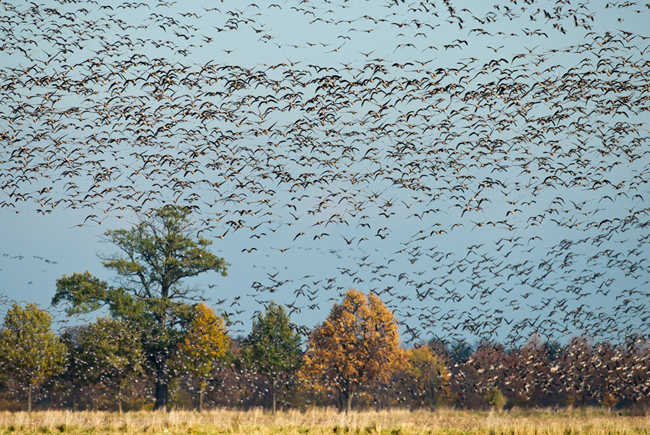The animals‘ sense of direction
Migratory birds on their way to warmer climes. When the great swarms cross the sky, have you ever asked yourself, how they know their way? Very simple: these clever animals have a sixth sense, the magnetic sense!
Magnetic sense – what is it that?
The magnetic sense is generally defined as the ability of animals to perceive the Earth’s magnetic field and use it for orientation. According to the British journal „Nature“, about 50 species have these skills. The German ornithologist Wolfgang Wiltschko was the first to discover it in the mid 60s using the example of robins, later of whitethroats and pigeons.
How does the magnetic sense work?
There is no definitive answer to this question, but number of hypotheses. It is important to know that the magnetic sense of certain animals is not equal to the magnetic sense of others. In fact different species seem to have different magnetic senses.
Birds come with a built-in „magnetic compass“
Birds use the magnetic field of the earth as an electromagnetic map. They recognize the inclination angle of magnetic field lines relative to the earth’s surface and distinguish between poleward and equatorward: At the poles, the magnetic field lines point vertically upright, while above the Equator they go parallel to the Earth’s surface. Scientists have yet to agree, where exactly the magnetic sense of birds is located. It is conjectured in certain molecules inside the eye’s retina, others assume it in the region of the beak.
According to latest theories, small magnetite particles are implemented above the beak. Magnetite is the most potent iron oxide, and it is very sensitive to the strength of the magnetic field. Depending on how the bird flies in relation to the earth’s magnetic field, these particles vary in form and trigger different reactions in the brain – and in return they influence the flight behaviour.
Magnetic sense in other species
The Australian compass termites use Earth’s magnetic field to build their hills of up to three meters in north–south orientation. As a result, they avoid their anthills being heated up by the sun.
Sea turtles navigate along the magnetic field of the Earth when they return to their birth places in order to lay their eggs – up to 20 years after they have left them. Scientists believe that they permanently memorize the inclination of the magnetic field lines and so navigate back easily.
Whales often cover Thousands of kilometres during their migrations across the oceans. It is not yet fully understood, how exactly they find their way, but one thing is clear: Their magnetic sense plays a crucial role. But not for orientation only. Magnetic sensors seem to help on the hunt as well. Researchers have found magnetite in the heads of whales. With these natural „magnetic sensors“ deep sea whales can sense their prey in the darkness of the deep sea.
Swarm satellites are as sensitive as animals
There is even a connection between the magnetic sense of the whales and the three Swarm satellites that the European Space Agency ESA will launch in November: These satellites are equipped with the finest sensors ever built and will be able to measure the tiniest change or variation in the magnetic field of the Earth. With these data, scientists can conclude about the evolution of the climate, discover new mineral resources, and improve navigation equipment. Maybe one day scientists will find the ultimate explanation for the magnetic sense of animals, too.
photo: picture-alliance

